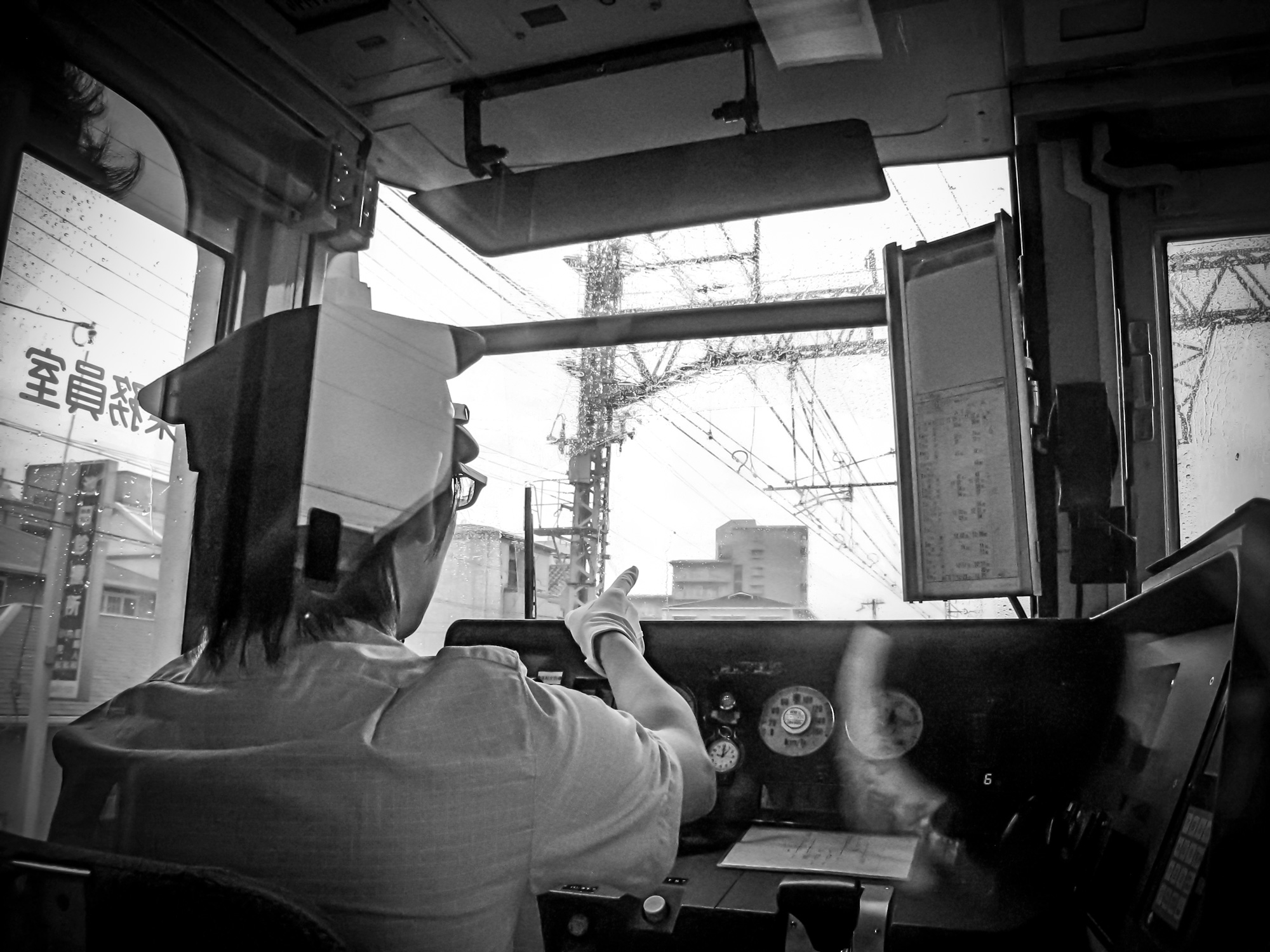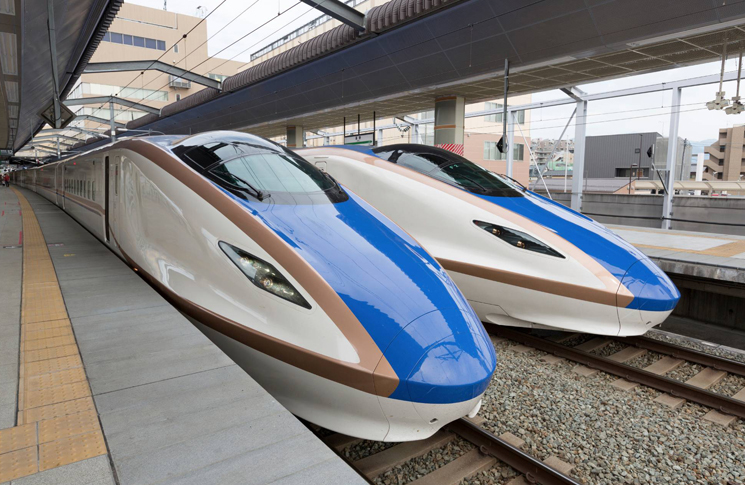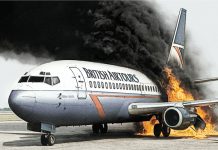How Japanese railway theatre could make aviation safer
There’s free entertainment on trains in Japan. Ride near the driver’s or conductor’s positions and you can watch them making bold gestures, accompanied by confident and abrupt vocalisations, sometimes ending with the word ‘Yoshi!’—Japanese for ‘OK’.
Most travellers file this as one the many ways that Japan can seem an eccentric, inscrutable and exotic society. But this is no mere pantomime; it’s a demonstrably effective safety technique.
The technique is called shisa kanko, a Japanese phrase meaning ‘point with finger and call’. It has been described as a practical demonstration of the Buddhist concept of mindfulness.
A train driver, using shisa kanko, would not simply glance at a display to perform a required speed check. Rather, they will point at the speedometer, with a call of ‘speed check, 80’—to confirm the action taking place, and audibly confirm the correct speed.
Station staff also use the method to ensure the platforms and tracks are free of debris or fallen passengers. The platform attendant will point along the track and sweep their arm along the length of the platform—eyes following the hand—before declaring all clear. They do it again as the train departs, ensuring no passengers or bags are caught in the train doors.
Pointing and calling is said to have begun in the early 20th century when a steam train driver became concerned about his vision getting worse. Worried that he’d go through a signal by mistake, the driver would call out the signal status to the fireman riding with him. The fireman would confirm it by calling back. By 1913, this practice was encoded in a railway manual and evolved into point and call.

Does it work?
With the horrible exception of the Amagasaki crash of 2005, which killed 107 people, Japanese railways are notably safe, with one passenger death per 51.4 billion passenger kilometres. The high-speed Shinkansen network, which is now six lines with trains running at up to 320 km/h (170 kt), has carried more than 10 billion passengers without a single passenger death from derailment or collision.
In 1994, the Japanese Railway Technical Research Institute assessed pointing and calling in an experiment that asked volunteers to complete a simple, but variable, task. When no special steps were taken to prevent errors, the volunteers made 2.38 errors per 100 actions. Calling or pointing cut this error rate significantly. But the greatest reduction in error to 0.38 errors per 100 actions happened when the volunteers both pointed and called their actions. This combination reduced mistakes by almost 85 per cent.
New York subway train conductors have been using point and call since 1996, when a system executive noticed the practice on a trip to Japan. A New York Metropolitan Transit Authority spokeswoman said that within two years of implementation, incidents of incorrectly berthed trains fell by 57 per cent.
CASA human factors and fatigue specialist, Robert Forsterlee, says pointing and calling improves operator responses by integrating physical and mental activity. ‘Your brain is more active when you point and speak than when you just think it. You are using more areas of your brain. It’s not just a memory thing, it’s a fatigue mediator. You’re making movements and if you do a little bit of exercise that’s refreshing.’
He acknowledges, however, that a cramped aircraft flight deck does not lend itself to the sort of expansive gestures used by Japan’s train drivers and conductors. ‘The most effective is the physical action,’ he says, ‘but a mental only version is better than nothing. That way you’re running an internal dialogue.’
Rail safety consultant Phil Barker says the technique is yet to be adopted on Australian railways. ‘It’s not widely used in Australia, although interestingly, it is used in Indonesia,’ he says. ‘It’s a good technique, but my guess is that Australian rail workers see it as over-the-top, which is a pity.’


Aviation
Forsterlee says the argument that pointing and calling may not work in Western cultures has been defied in aviation. ‘Cabin crew have been doing it for years, although they don’t do all they might with it,’ he says. ‘When they stand in the aisle and say, “Your nearest exit may be behind you”, they point to it.’
But Forsterlee wonders if the technique could be expanded into a dialogue with passengers, in an attempt to break the trance of inattention that often surrounds cabin safety briefings. ‘If they asked people in the cabin, “Hey you in seat 26a, where’s your nearest emergency exit?” people might pay attention more. There are little ways to make it more amusing and engaging.’
Flight deck procedures use pointing or calling, but rarely both. They tend to be applied to tasks where accuracy is more important than speed. For example, to change altitude on autopilot the pilot monitoring (PM) enters the new altitude into a flight director and leaves their hand on the altitude selector until the pilot flying (PF) acknowledges.
Writing in Aviation Week, James Albright outlined how adopting point and call could improve flight deck crosschecking. For altitude changes Albright suggests:
- The PM acknowledges the altitude assignment on the radio while dialling in the new altitude (the ‘point’). While leaving a finger on the altitude selector is desirable, there are times when the PM has other immediate tasks.
- The PM then announces the new altitude cross-cockpit (the ‘call’). Repeating the altitude between pilots reinforces the correct altitude in the PM’s mind.
- The PF points to the primary flight display if that shows the primary flight guidance altitude, or to the altitude selector if that is primary to the avionics installation (the ‘point’). In some aircraft, the altitude selector may not accurately reflect the commanded altitude during metric altitude operations, for example.
- The PF verbalises the new altitude assignment (the ‘call’). While having the PF also announce the altitude can seem to be more cockpit chatter than many crews would like, it gives both pilots another chance to mentally assimilate the instruction. It could, for example, cue the PM that something ‘isn’t right’.
Course changes are another example where the near foolproof point and call method should be employed, Albright says. ‘When making an FMS entry, for example, the pilot should announce the actions taken. “We are now going direct to a new point, JFK, which I have inserted before Hartford,” for example. If the navigation software allows a preview of the changes on the FMS or display units, both pilots can confirm the results are correct. But even without this preview, both pilots should point to the resulting course changes to confirm their validity.’
Pointing and calling gives both pilots more chances to catch errors, Albright says. ‘The verbal and tactile senses will enhance the visual.’
An aircraft is most like a train when it is taxiing. Albright says point and call has clear potential in this part of operations. ‘If you adopt the habit of pointing to an action before you get to it, you can double your chances that both pilots will have had a chance to verify the action agrees with the clearance,’ he says.
He recommends the pilot steering the aircraft onto an adjoining taxiway should point to its sign and announce the action. ‘I see taxiway alpha,’ the pilot says while pointing to the ‘A’ sign, ‘I will be turning left.’ The other pilot should confirm by pointing to the same sign, ‘I see alpha. It is a left turn.’
A similar protocol for runway entry should have the pilot in control of the aircraft pointing to a runway sign, announcing the intended action, and calling out the correct runway heading once in position. The other pilot should verify each action.
Pointing and calling is as applicable to single-pilot operations as it is to unaccompanied train drivers. The combination of pointing and verbalising can help the pilot detect a self-initiated error.
‘When you’re by yourself who keeps you on course?’ asks Forsterlee. ‘You have to be self-directed. But how? Some people will say willpower. But that’s very fallible if you’re tired or distracted. You’ve got to have a line of defence, such as active, ritualistic engagement with the process.’
Forsterlee says pointing and calling could be a particularly useful tool in reducing maintenance error. ‘Settings on torque wrenches, for example, are a common mistake. Often you hear “I was putting the tool back in the shadow box when I noticed the torque at x when it should have been y.”
‘Tour guides often point and call. They’re directing attention to something important. If the Eiffel tower is worth pointing at, so is your tool kit.’
There’s nothing wrong with talking to yourself. You’re just ensuring you’ve covered everything.’
Further information
Central Japan Railway Company (n.d.). About the Shinkansen.
Gordenker, A. (21 October 2008). JR gestures. The Japan Times News.
Powell, S. J. (9 May 2017). BBC Travel. The Japanese skill copied by the world.
Richarz, A. (29 March 2017). Atlas Obscura. Why Japan’s Rail Workers Can’t Stop Pointing at Things.





Comments are closed.